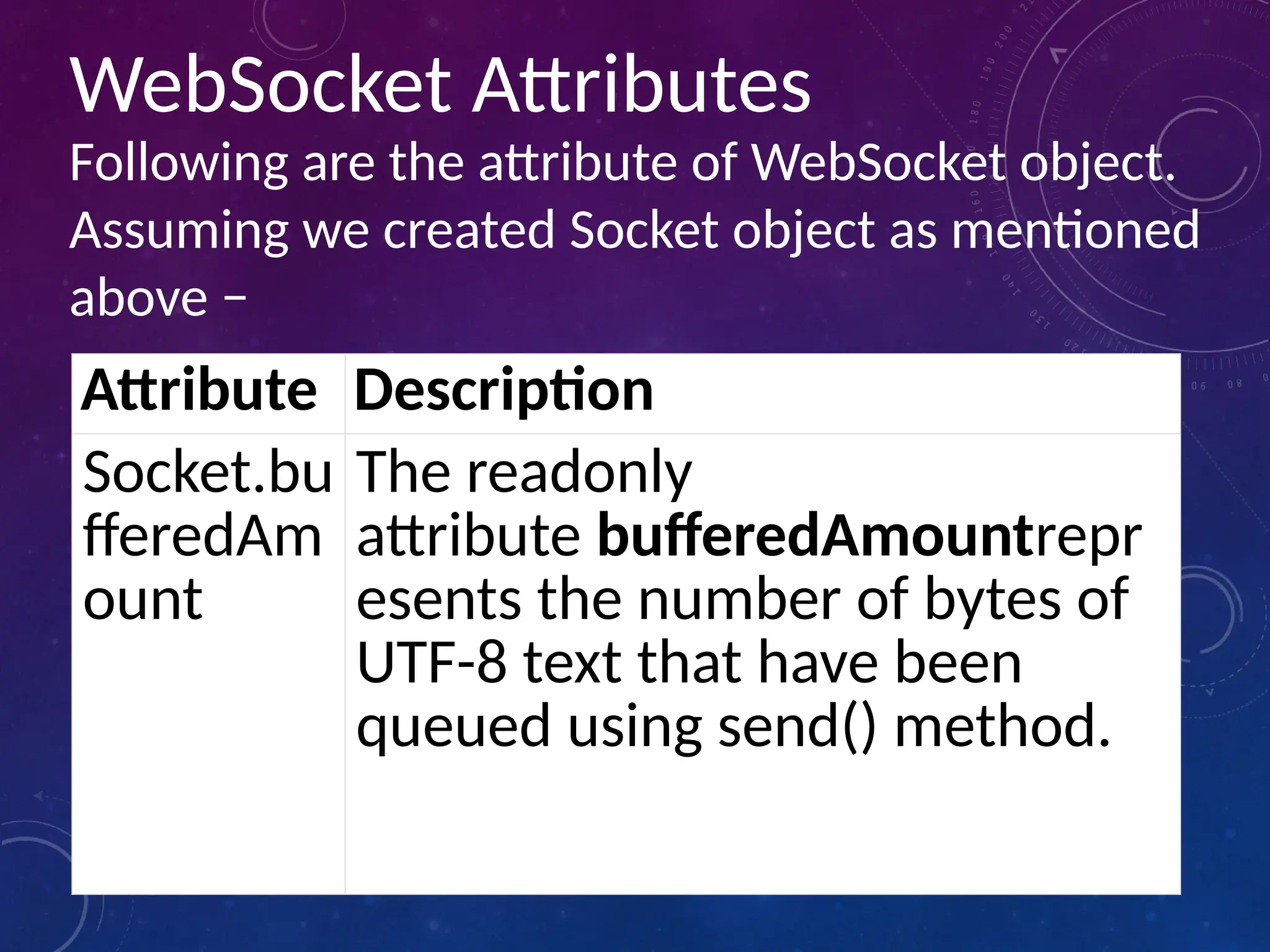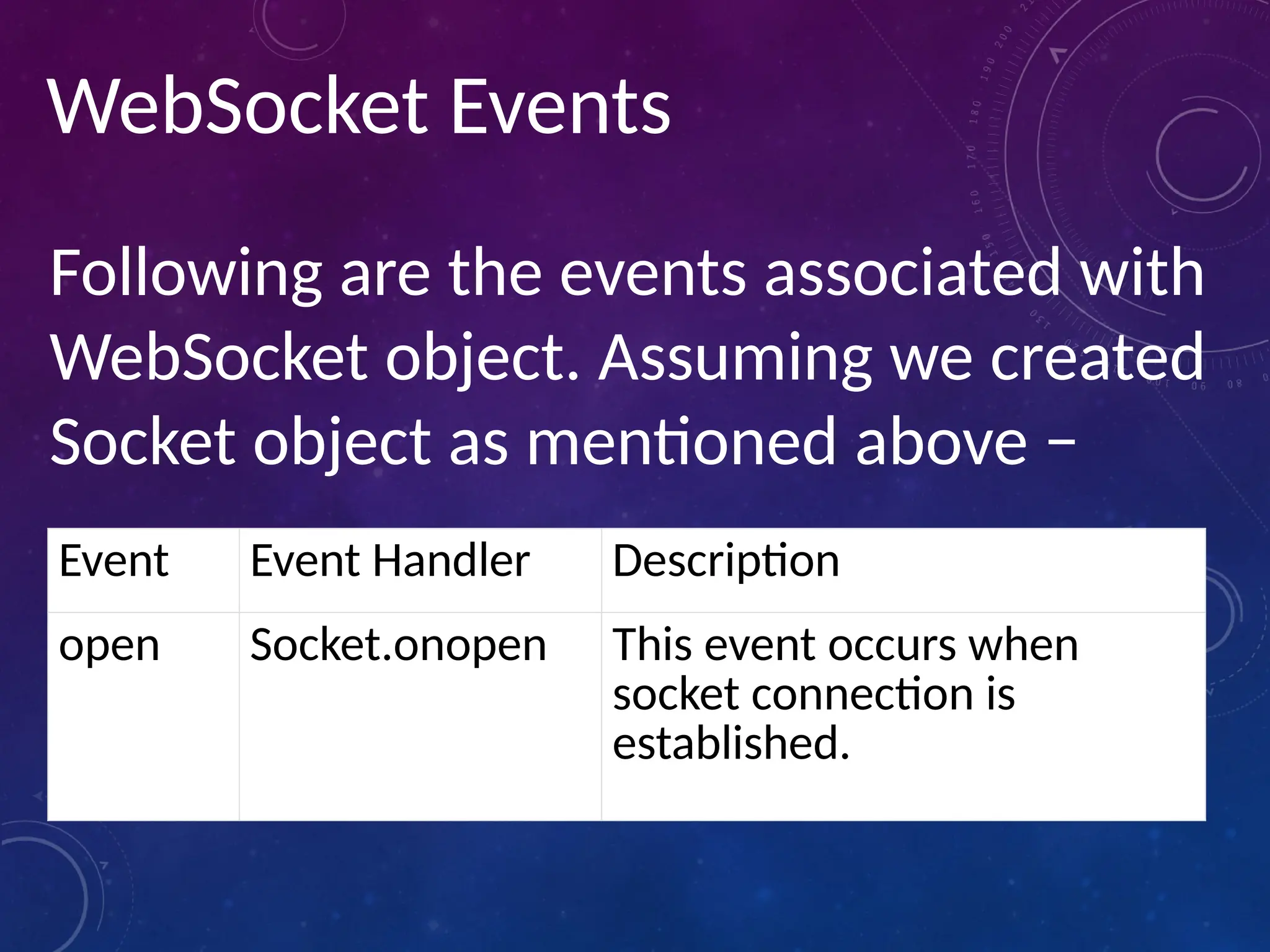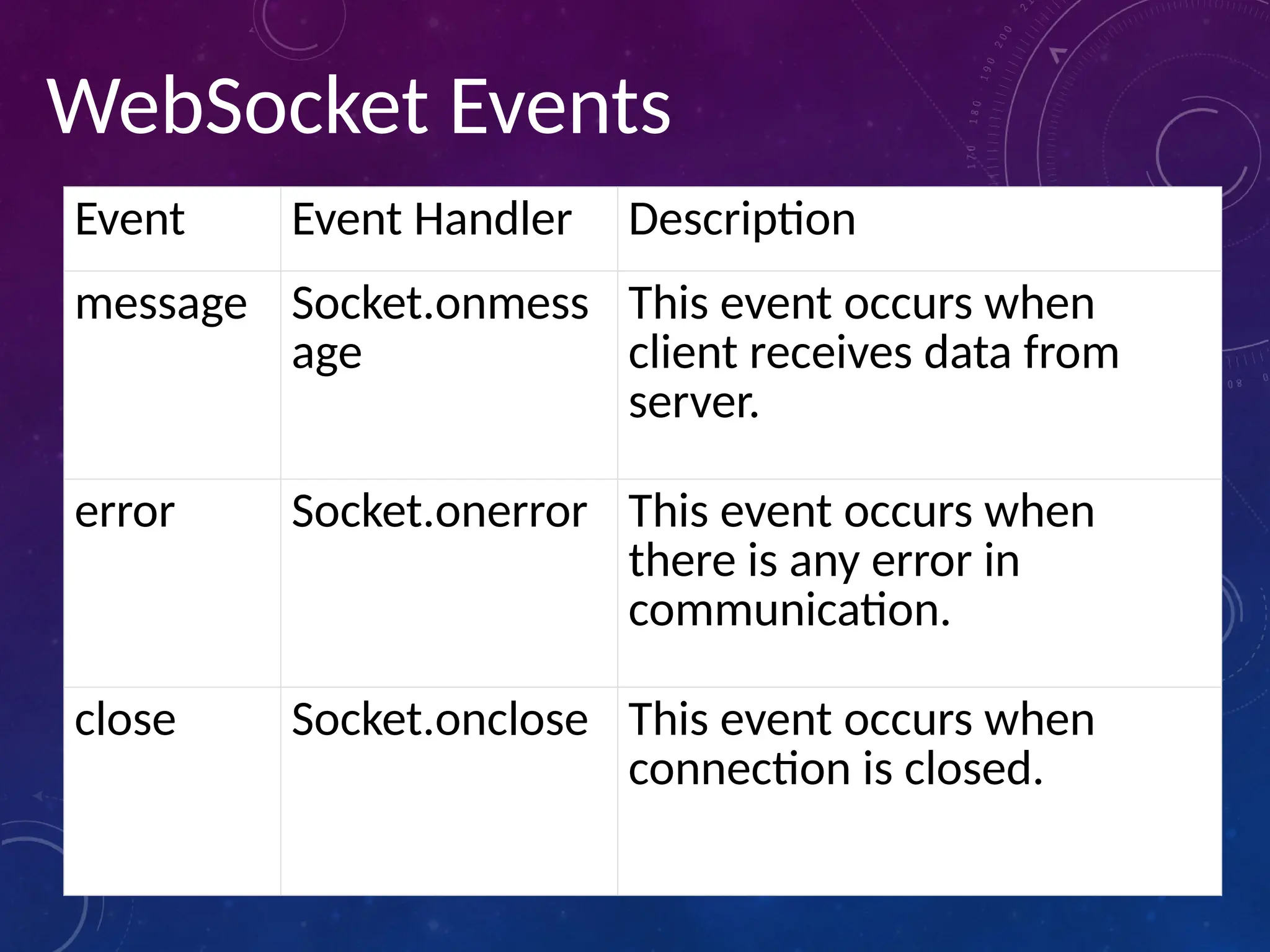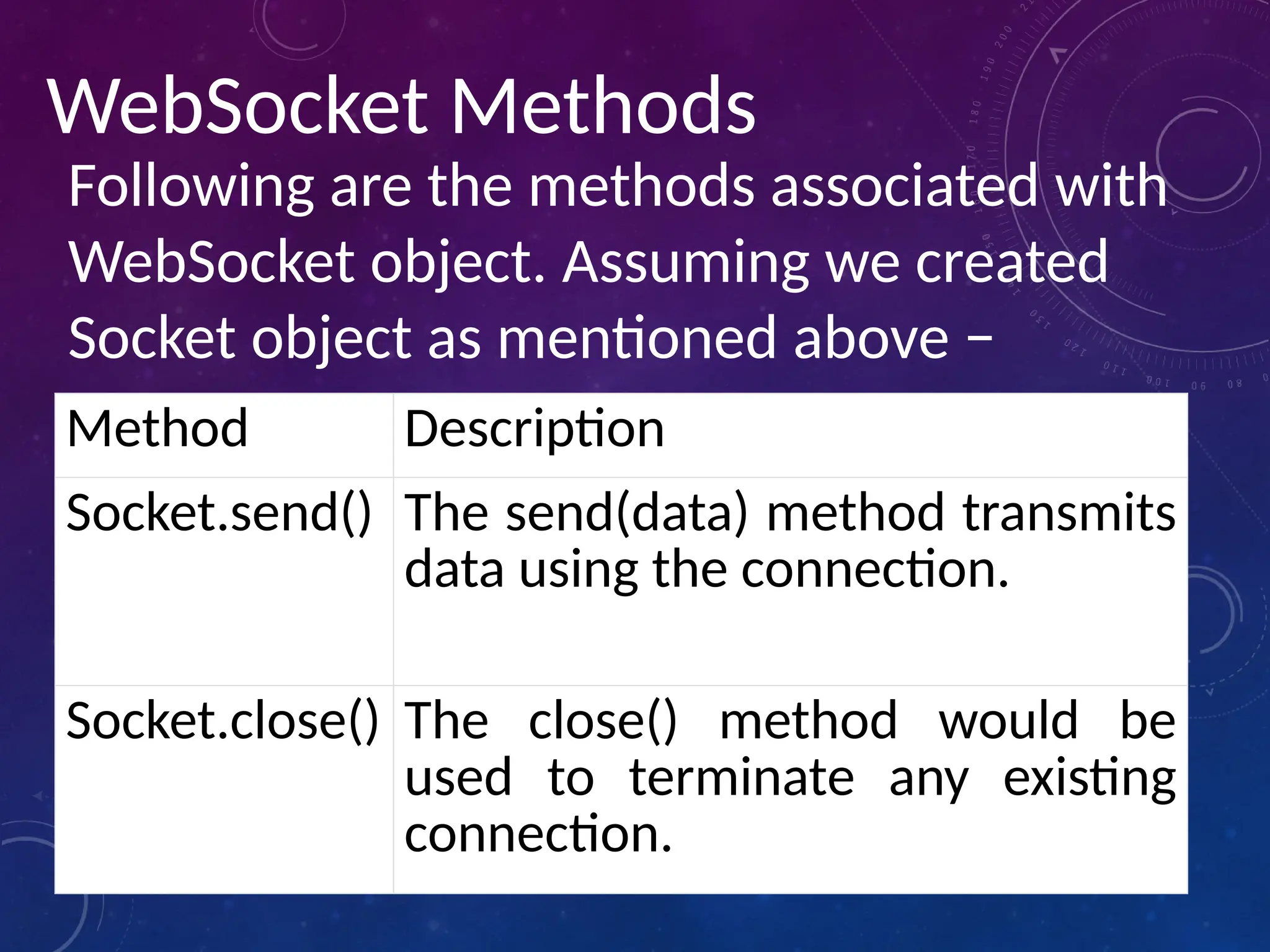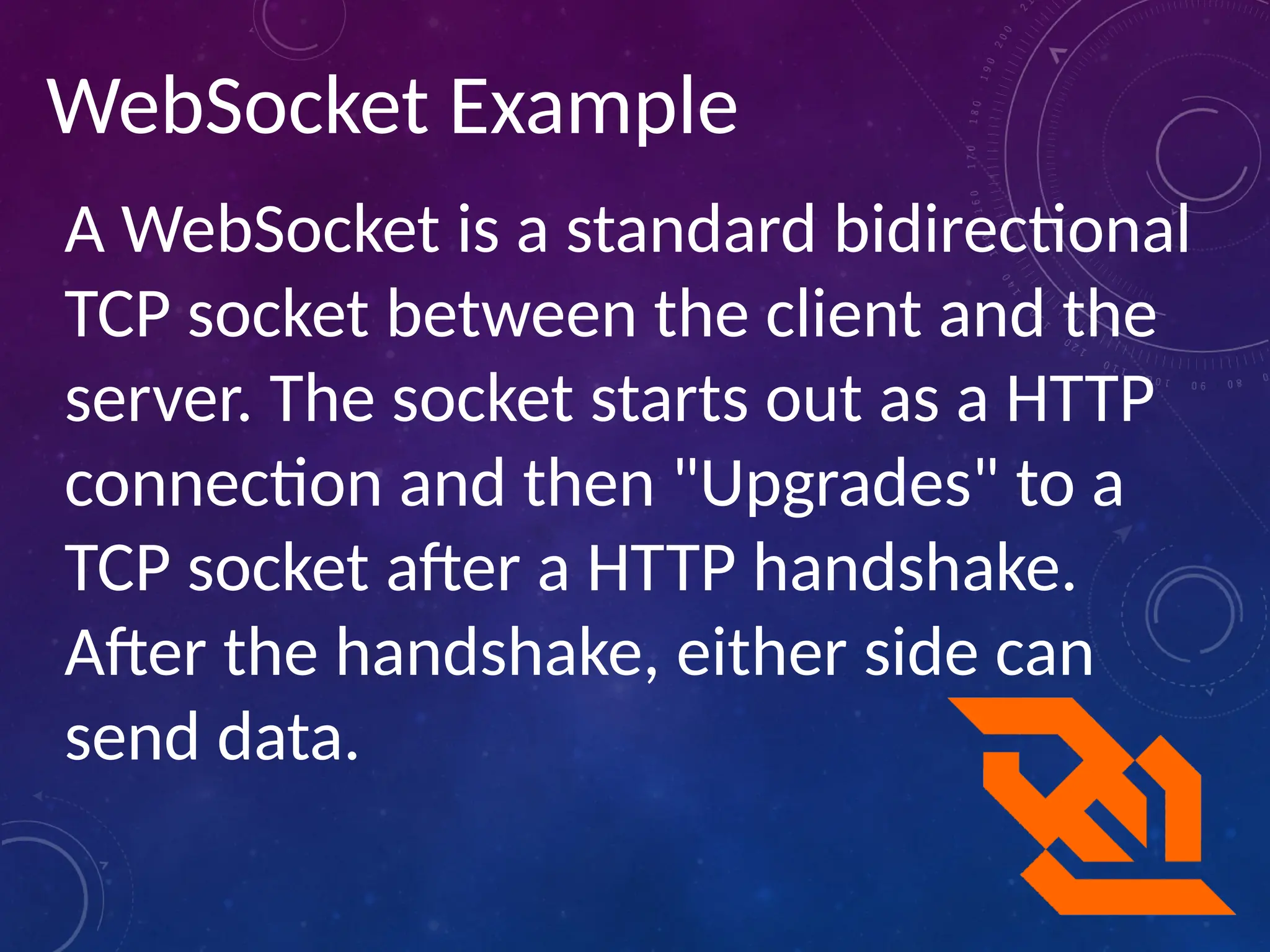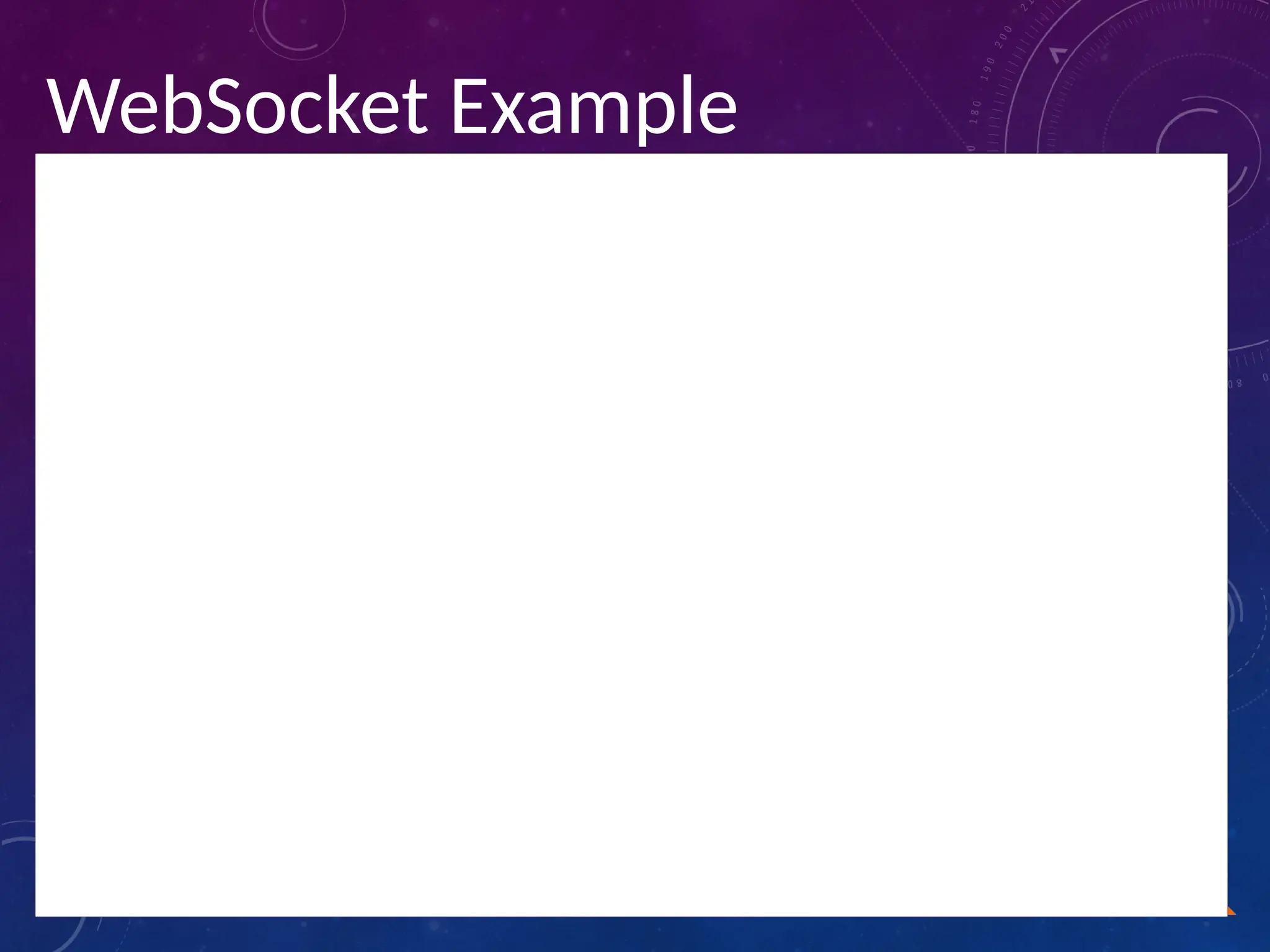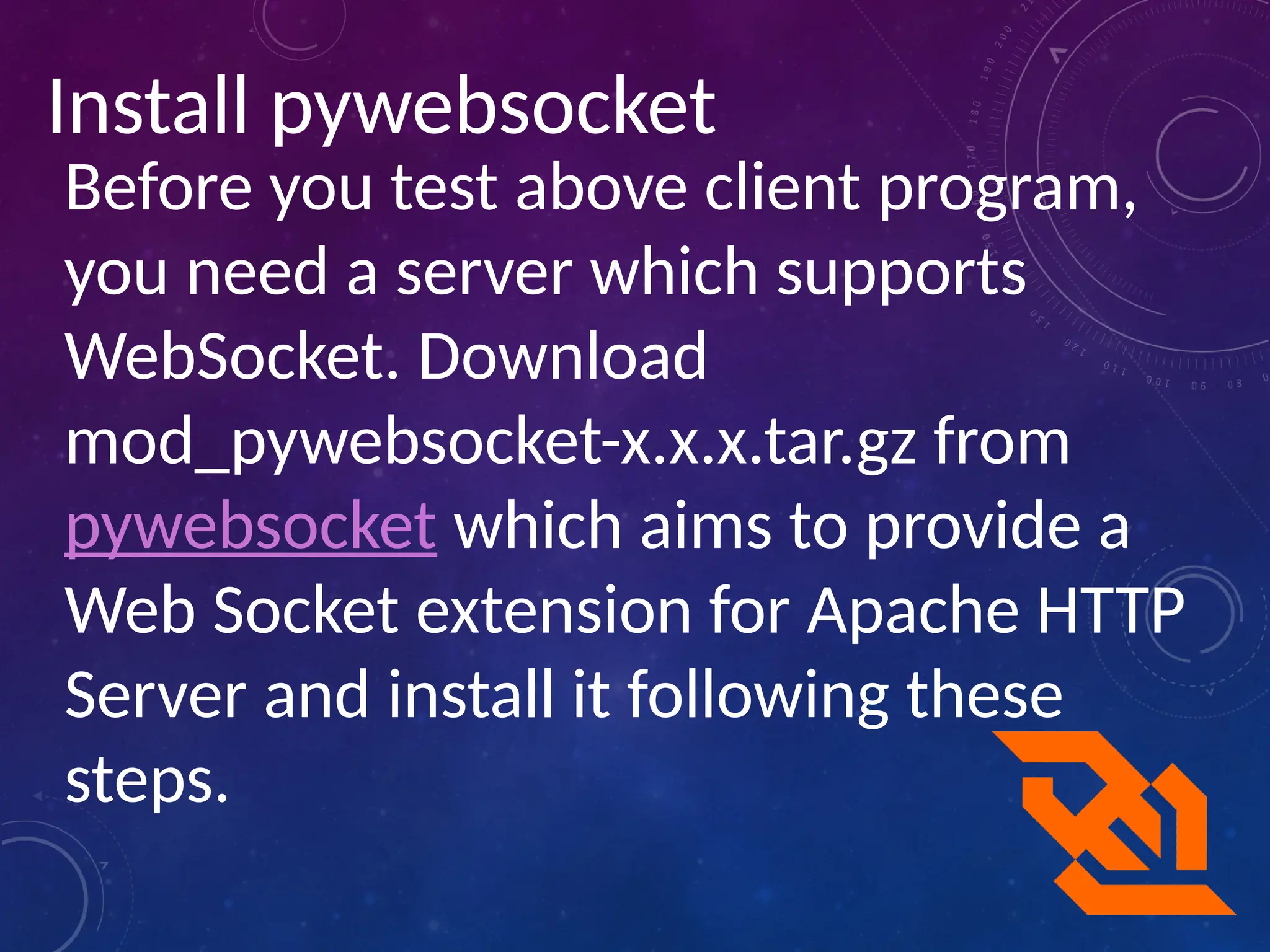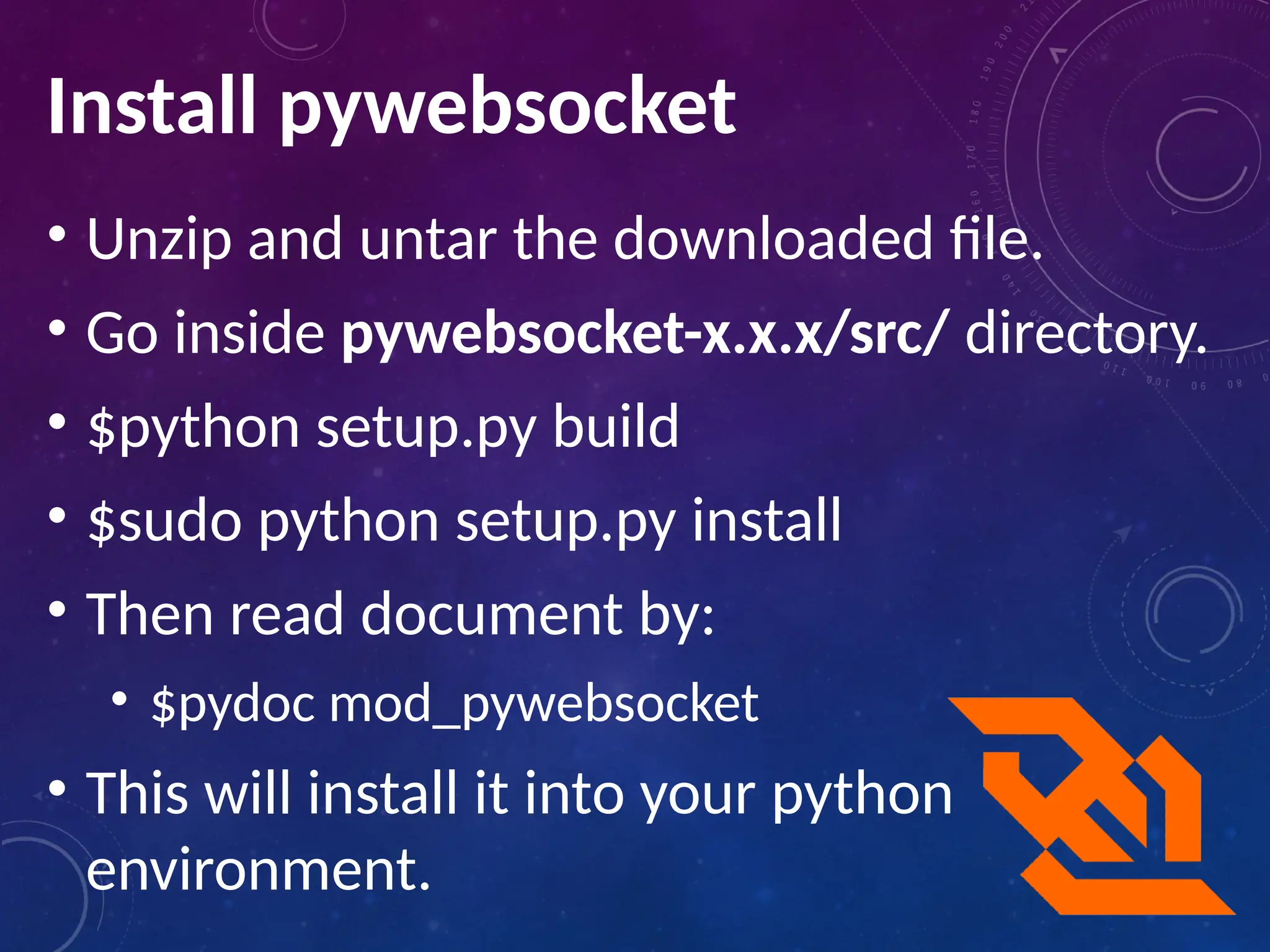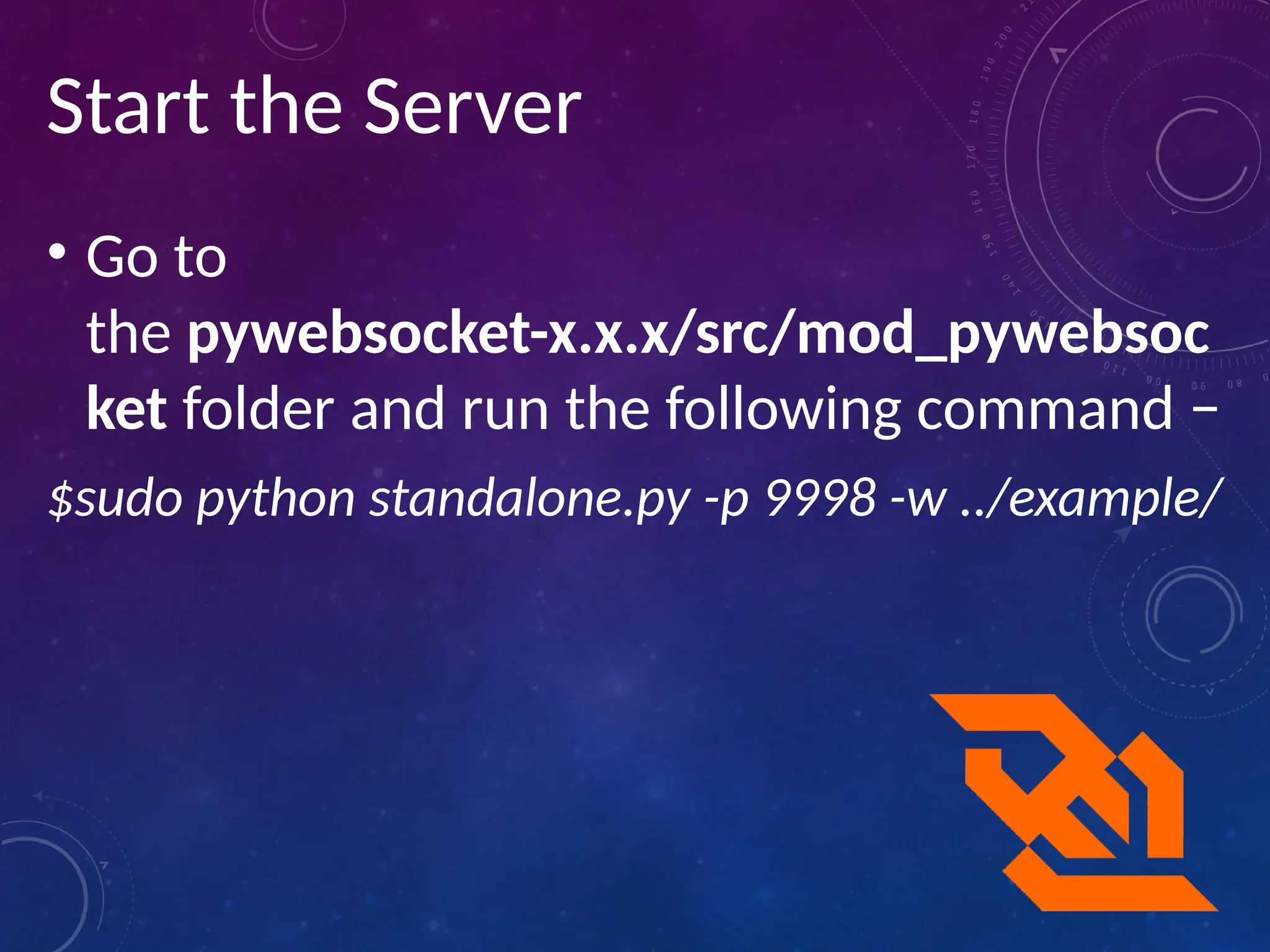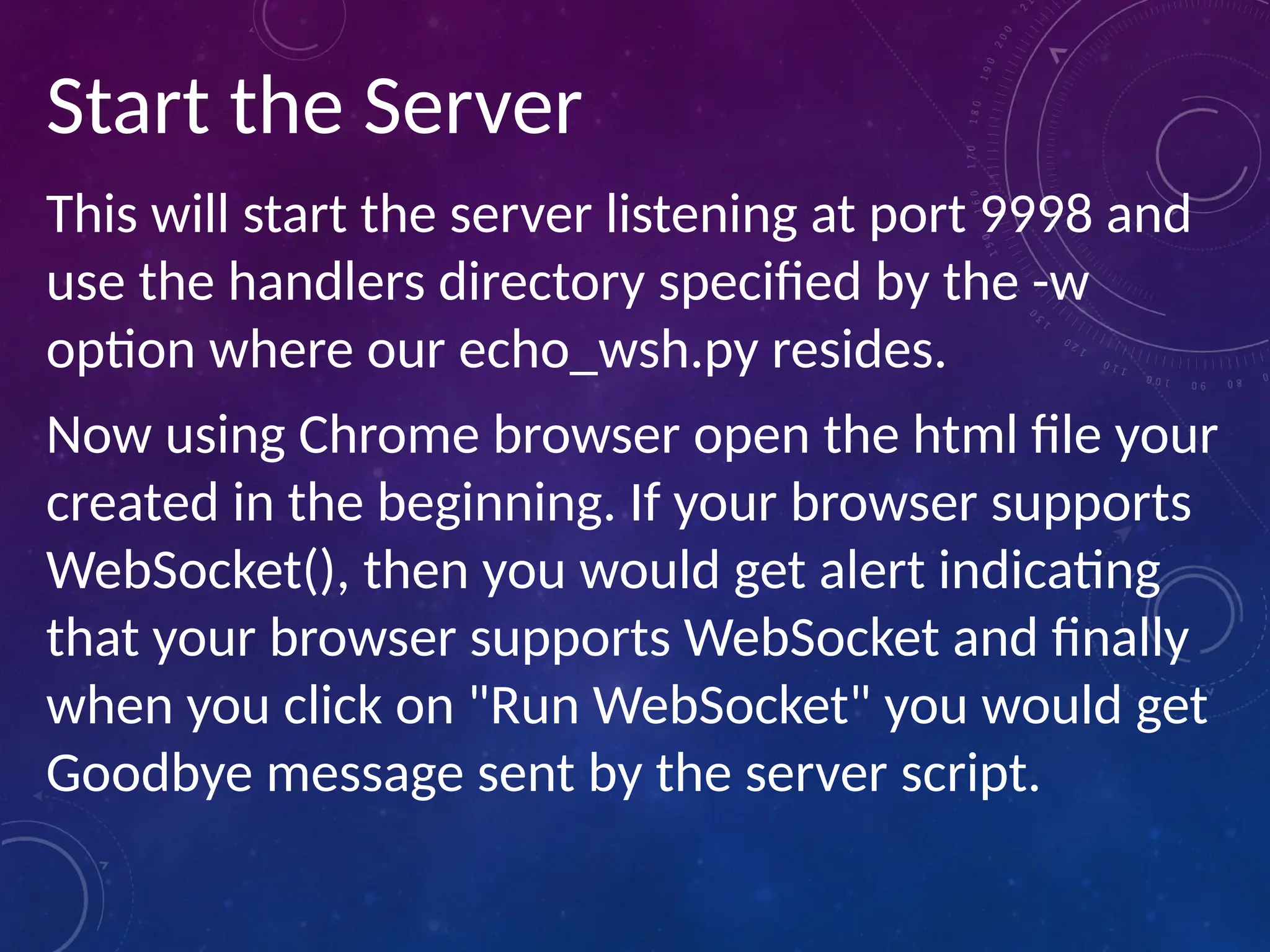WebSockets is a next-generation bidirectional communication technology for web applications using a single socket, allowing real-time data exchange between the browser and server. Key features include methods like send() and close(), as well as events such as onopen, onmessage, onerror, and onclose. An example implementation shows how to set up a WebSocket connection and communicate with a server, including instructions for installing the necessary server software.

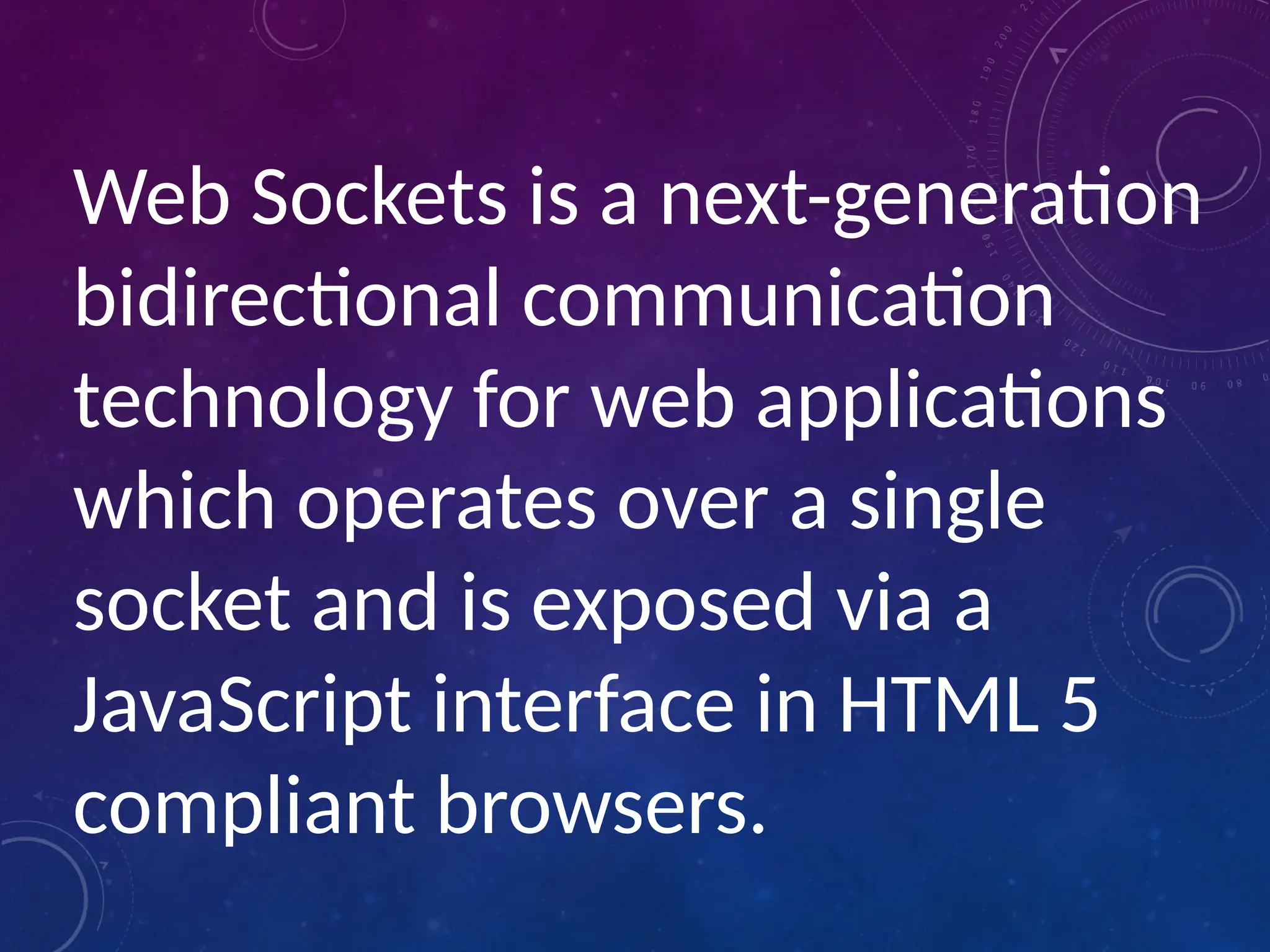
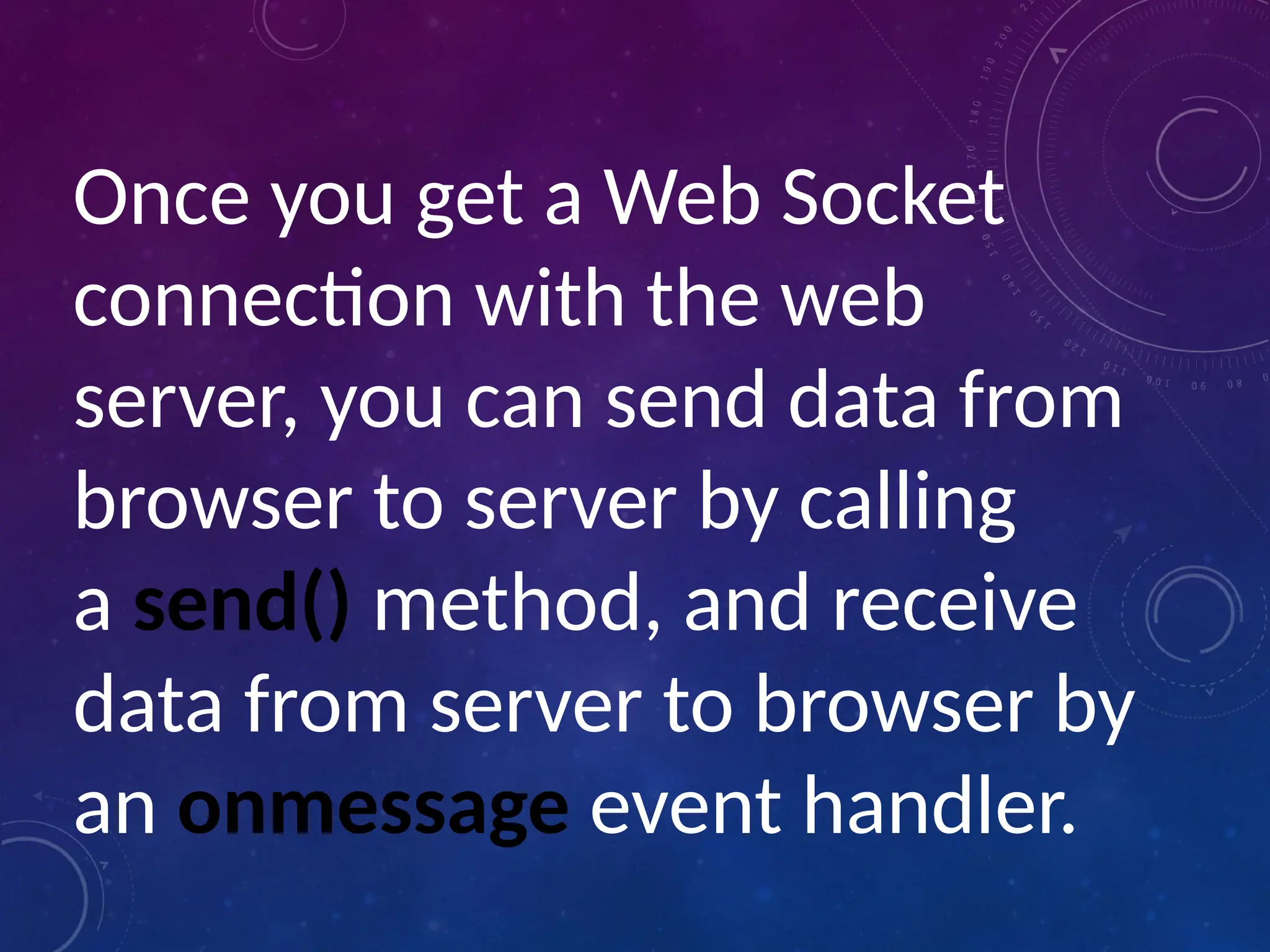
![Following is the API which creates a new
WebSocket object.
var Socket = new
WebSocket(url, [protocal] );
Here first argument, url, specifies the URL to
which to connect. The second attribute,
protocol is optional, and if present, specifies
a sub-protocol that the server must support
for the connection to be successful.](https://image.slidesharecdn.com/websockets-241211024139-c1afdae4/75/presentation-in-net-programming-web-sockets-pptx-4-2048.jpg)
